Inbox and Environment News Issue 177
August 24 - 30, 2014: Issue 177
Cotton Harlequin Bug - Tectocoris diophthalmus
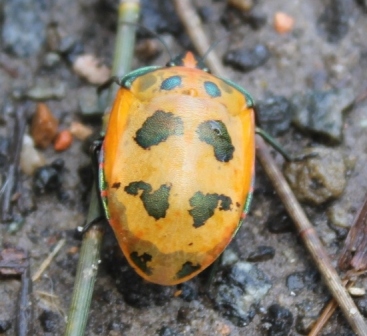
This colourful insect is a member of the Jewel bug family (Scutelleridae) named for their bright metallic colouration. They are also known as Hibiscus Harlequin Bugs and common in Brisbane. This one is a female, which you can tell by her orange colour with small patches of metallic blue scatter over the body. Males are red with metallic blue patches. Their patterns can be quite different between individuals. Males are smaller than the females in size.
This one lept onto my hand on the way home yesterday, and when put back on the ground, leaned up to peer at me as though she wanted to catch another ride.
Spring is arriving! All the beautiful colourful six legged ones are coming out and flying about...

Seeking Creative Kids to Help our Environment
Do you have a budding Baz Lurhmann or a Pittwater Picasso in your midst?
Pittwater Council’s Coastal Environment Centre (CEC) is inviting Years 3 to 6 students from local primary schools to enter a competition with an important environmental message.
Council’s Natural Environment Manager Mark Beharrell said there are opportunities for students from the Peninsula Community of Primary Schools in both Years 3& 4 (Stage 2) and Years 5 & 6 (Stage 3) to unleash their creative juices.
Stage 2 students are being asked to demonstrate their artistic abilities by designing a sticker for storm water drains using the tag line “Only rain down the drain”.
Mr Beharrell said the top three winning designs will be turned into stickers to be placed around local storm water outlets to reduce the chance of pollution ending up in our creeks and waterways.
Stage 3 students are invited to join a Pittwater Tropfest by spreading the word about storm water pollution which will ultimately be made into a mini three minute movie.
Students are asked to come up with a creative idea for the movie, with the top three ideas being made into films and the students involved getting to work with a professional film director.
Local film director Steven Hancock will assist the three winning students in creating a script, developing storyboards and ultimately planning and shooting their film.
Their creative piece may be produced as either a documentary, current affairs piece, dramatic story or animation.
The winning films will be screened at local community events and placed on Council’s website.
For further information and how to enter the competition call the CEC on 1300 000 232.
The competition closing date for the Stage 2 sticker design is 20 September and Stage 3 film (ideas only) is 5 September.
Mona Vale Public School Tree Planters - August 11th 1950 - only 74 years ago!
From the pages of the past we found this little item which may interest you - we have been collecting little items like this for years and next month will be doing a series of history pages that focus on different aspects of our Pittwater Environment with a focus on all things watery. This news item may pose as many questions as answers to you, but in the question is the answer - investigate - or just ponder for a moment where and what kinds of bottle brushes were planted on the verge of Spring when your grandparents were skipping around Mona Vale Public School's yards:
Mona Vale Public School Plants 140 Trees In Three Streets
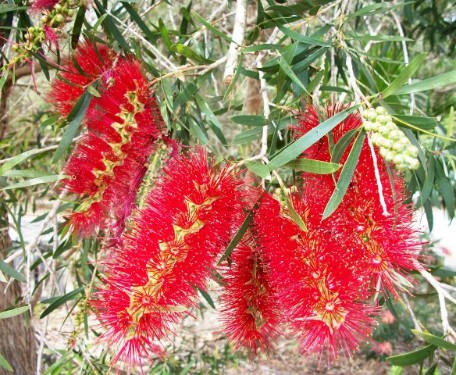 ONE hundred and forty Bottle Brush trees were planted at Mona Vale on August 11, when Arbor Day was celebrated at Mona Vale School.
ONE hundred and forty Bottle Brush trees were planted at Mona Vale on August 11, when Arbor Day was celebrated at Mona Vale School.
The trees were planted in Narrabeen, Waratah and Park streets, which surround the school, at which 148 students have become tree wardens.
The tree planting was arranged by the schoolmaster, Mr. Daly with the co-operation of the Parents and Citizens' Association. ;
- The P. &. C. and school children bought most of the treelings from the Forestry Department, the Department giving the remainder.
Mr. Daly addressed the gathering of children, parents and visitors, after which Mr., Austin, inspector of schools, Mr. Asian; M.L.A.,, and Mr. Watson, of the Naturalist: Society, addressed the large gathering.
All spoke of the great value of trees to the individual, the community, and the nation, and urged the growing, care, and protection of trees.
Trees were living things of beauty and great usefulness, and every effort should be made to save them from damage and destruction, the speakers said.
The young trees were distributed among the visitors,, children and members of the Parents and Citizens' Association who moved to positions in the three streets where the treelings were planted.
Other visitors included members of the N.S.W. Town Planning Association (Mr. and Mrs. B. W. Ford), the president of Warringah Shire Council(Mr. R. Kent),- a member of the Forestry Advisory Committee (Mr.Turner), the secretary of Pittwater R.S.L. (Mr. Bimsan), Mrs. Ingleton, representing the Mona Vale Community League, and Mr. and Mrs. E. H. Collins.
The president of the P. and C. Association (Mrs. K. Batten) assisted by the secretary (Mrs. O. Anderson)entertained the visitors at lunch, while the school children provided a bright concert programme, which included Master Ted Budge's vocal solo, "Trees."
Visitors paid tributes to the school staff, P. and C. members, and all who assisted in the tree planting and entertainment. MONA VALVE SCHOOL PLANTS 140 TREES IN 3 STREETS. (1950, August 25). The Land (Sydney, NSW : 1911 - 1954), p. 14. Retrieved from http://nla.gov.au/nla.news-article105713567
Australia's biodiversity: Indigenous perspectives
Published on 19 Aug 2014
Aboriginal concepts connecting people to 'Country' and living things through a web of relationships have a lot in common with the English term 'biodiversity'. Aboriginal and Torres Strait Islander peoples have a unique perspective on Australia's biodiversity and its management, which stems from their long-term observations, sustained residence and oral histories. Dr Fiona Walsh talks about some of the knowledge and perspectives that have been shared with her. (07:50)
Access CSIRO's book Biodiversity: Science and Solutions for Australia - http://www.csiro.au/biodiversitybook
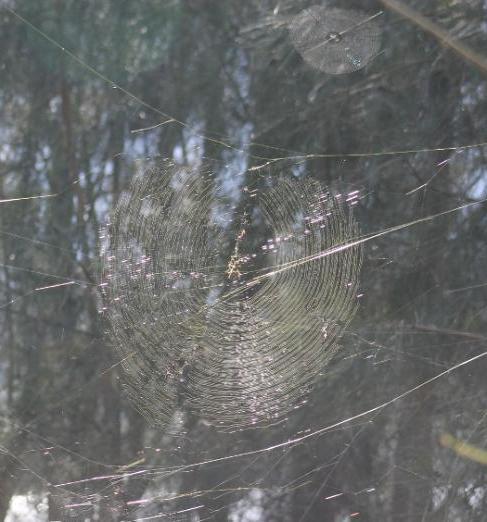
Bright lights, big city a great lifestyle for these spiders
20 August 2014
City life does not suit everyone but golden orb-weaving spiders thrive in urban landscapes, a University of Sydney study shows.
"City-dwelling orb-weaving spiders grow larger and could produce more offspring than their country cousins our research shows," said Elizabeth Lowe, a PhD candidate in the University's School of Biological Sciences and lead author of a study published in the journal PLOS today.
This study shows invertebrates are sensitive to urbanisation but that not all species are negatively affected by living in cities.
"Our findings show the impact urbanisation can have on local wildlife. While many species do not survive encroaching urbanisation and the consequent loss of native habitat, others have a more complex relationship with man-made changes to the landscape.
The researchers collected golden orb-weaving spiders (Nephila plumipes) from across the Sydney city region. The spiders are abundant on Australia's coast in both urban and natural environments and, once matured, remain in the same location for the rest of their lives.
"We quantified the degree of urbanisation of 20 sites then looked at changes in the spiders' body size, fat reserves and ovary weight," Ms Lowe said.
The results show spiders in areas with more vegetation cover had smaller bodies and larger bodies when located in urbanised areas, characterised by increased housing and population density and hard surfaces such as roads and buildings.
The authors also found that the spiders' reproductive ability, measured by increased ovary weight, appeared to increase in urban areas.
"Two reasons likely to explain the differences between these spiders in urban and non-urban environments are temperature and prey availability. Hard surfaces and lack of vegetation lead to the well-known 'urban heat island' effect with more heat retained than in areas with continuous vegetation. Higher temperature is associated with increased growth and size in invertebrates.
"Urban lighting also may be a contributing factor as it attracts insects and means more food for spiders in those environments. This increase in prey would result in bigger, heavier, more fecund spiders.
Associate Professor Dieter Hochuli from the School of Biological Sciences and Professor Shawn Wilder, now at Oklahoma State University, are corresponding authors on the paper.
Study to look at link between pet abuse and domestic violence
18 August 2014 - University of Sydney vet Dr Lydia Tong has shown vets how to tell the difference between bone fractures caused by accidents and those caused by abuse.
Pet abuse and domestic violence are closely linked. Dr Tong's fracture identification methods are giving vets the added confidence to identify cases of violence against pets and could serve as a warning of domestic violence.
Now, in a new study with Domestic Violence NSW, Dr Tong, from the University's Faculty of Veterinary Science, is looking deeper into the connections between animal abuse and domestic violence to assess the need for better services to protect both human and animal victims.
"Around 70 percent of women escaping violent homes also report pet abuse," Dr Tong said. "So vets are often the first to see evidence of abuse in a family, when they treat injured pets."
"Different forces on bones can tell a story—the skeleton of an animal keeps a distinct record that indicates the force applied to bones from past injuries, breaks or fractures. But it can often be difficult for vets to say with confidence whether a fracture has resulted from abuse or accident."
To give vets this confidence, in a 2014 study, Dr Tong collected cases of abused dogs that were punched, hit with a blunt weapon or kicked, and examined the fractures from these injuries. She then compared these fractures to those caused by genuine accidents. Her results, published in The Veterinary Journal, identified five key features of fractures that vets could look for to distinguish accidents from abuse.
Now, having given vets this reference to diagnose abuse, Dr Tong and her colleagues are gathering more information on the connections between domestic violence and animal abuse.
"We already know that many women will delay seeking shelter if their pets are threatened or can't be housed along with them," explains Dr Tong.
"US studies also tell us that domestic violence perpetrators who also abuse pets are more dangerous—they have increased rates of physical and sexual violence and stalking, and are more likely to kill their partners.
"We need to know more about the relationship between animal and human abuse in Australia so that we can recognise abuse earlier, save lives, and provide appropriate services for victims and for their pets."
The study will survey victims of domestic violence who are also pet owners.
"Perpetrators of violence will often threaten to abuse or harm family pets as a way to exert control," said Moo Baulch, CEO of Domestic Violence NSW.
"This research is essential because we need to have a much clearer picture of the connections between domestic and family violence and the abuse of animals.
Building a solid evidence base in this area will assist policymakers, domestic and family violence services and people working with animals to better respond to the needs of women and children with pets who are experiencing violence and are afraid to leave."
Dr Tong and her team are keen to hear from other domestic violence support agencies, services or refuges that would be willing to be involved with this study.
Dr Tong was a 2014 national finalist of FameLab Australia.
Dyslexia: Balanced view needed on expensive lenses to improve reading
August 19, 2014 - Between 3-6% of children in the UK have substantial difficulties learning to read, a condition often referred to as "dyslexia." They are at high risk of educational underachievement, explain consultant ophthalmologist Philip Griffiths and colleagues in an editorial. An accumulation of evidence supports the view that dyslexia is a verbal (not visual) disorder, and shows that reading difficulties are best addressed by interventions that target underlying weaknesses in phonological language skills and letter knowledge.
Yet dyslexia is often associated with subjective experiences of visual distortions that lead to discomfort during reading (sometimes termed 'visual stress').
It has been argued that these symptoms can be alleviated through the use of coloured overlays and lenses - and that this can lead to an improvement in reading accuracy and fluency.
But a 2008 review of eight randomized controlled trials (RCTs) of coloured overlays and lenses concluded that the use of coloured filters "did not lead to a clear improvement in reading ability or symptoms of visual stress in subjects with reading disability."
A more recent review also concluded that "the evidence base did not support the use of colour in the management of reading difficulty."
Nevertheless, coloured overlays and lenses have become widespread in classrooms and higher education institutions as a core part of the remediation for reading difficulty, say the authors.
Possible reasons for this include uncritical reporting in the media and the lack of a body equivalent to the National Institute for Health and Care Excellence (NICE) reviewing the evidence base for educational interventions, they suggest.
Another important factor is endorsement from dyslexia charities.
So they reviewed information on the use of overlays and tinted lenses provided by the websites of prominent dyslexia charities, eight from within the UK and three from English-speaking countries outside the UK.
Six of the eight UK charities provided information about coloured overlays and lenses in dyslexia. In all six cases, the message was one of endorsement, and the conflicting nature of the evidence base was not discussed.
The three overseas charities presented a different picture. Dyslexia Ireland includes the use of overlays under the section on alternative or complementary therapies. While both the International Dyslexia Association and Specific Learning Difficulties Australia provide links to academic websites that take a sceptical view of the existence of visual stress and treatment with overlays.
The endorsement by charities also contrasts with the advice issued by the professional bodies, whose members encounter children and adults with reading difficulties, add the authors.
For example, a recent joint statement from the American Academy for Pediatrics, Council for Children with Disabilities, American Academy of Ophthalmology, American Association for Pediatric Ophthalmology and Strabismus and the American Association of Certified Orthoptists concluded that ." .. scientific evidence does not support the efficacy of … special tinted filters or lenses in improving long term educational performance."
Similarly, a review for the Royal College of Ophthalmologists concluded that "manipulation of the visual system using colour to facilitate reading lacks scientific support."
"It is of great concern that so many UK dyslexia charities are giving an inaccurate account of the evidence for the use of coloured lenses and overlays for managing reading difficulties," write the authors. "Individuals using these websites could be persuaded to spend large amounts of money on precision tinting systems, or expect the NHS to support this."
They acknowledge that dyslexia charities offer a valuable source of information about dyslexia and its management, and that advice on coloured overlays and lenses is only a small part of the information provided.
However, they conclude that "an evidence-based approach from UK dyslexia charities educated by good science would enable the public to make a more informed choice."
Philip G Griffiths et al. Treating reading difficulties with colour.BMJ Open, August 2014 DOI: 10.1136/bmj.g5160
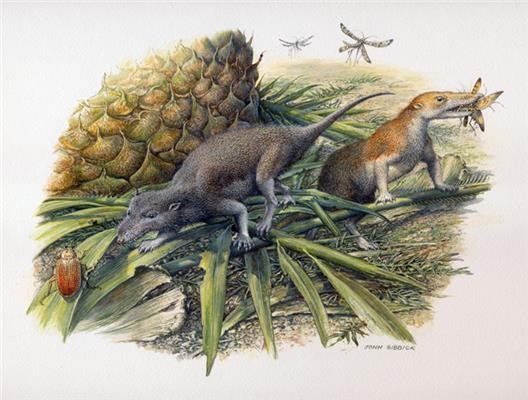
Jurassic mammals were picky eaters, new study finds
August 20, 2014 - New analyses of tiny fossil mammals from Glamorgan, South Wales are shedding light on the function and diets of our earliest ancestors, a team including researchers from the University of Southampton report today in the journal Nature. Mammals and their immediate ancestors from the Jurassic period (201-145 million years ago) developed new characteristics - such as better hearing and teeth capable of precise chewing.
By analysing jaw mechanics and fossil teeth, the team were able to determine that two of the earliest shrew-sized mammals, Morganucodon and Kuehneotherium, were not generalised insectivores but had already evolved specialised diets, feeding on distinct types of insects.
Lead author, Dr Pamela Gill of the University of Bristol, said: "None of the fossils of the earliest mammals have the sort of exceptional preservation that includes stomach contents to infer diet, so instead we used a range of new techniques which we applied to our fossil finds of broken jaws and isolated teeth. Our results confirm that the diversification of mammalian species at the time was linked with differences in diet and ecology."
The team used synchrotron X-rays and CT scanning to reveal in unprecedented detail the internal anatomy of these tiny jaws, which are only 2cm in length. As the jaws are in many pieces, the scans were 'stitched together' to make a complete digital reconstruction. Finite element modelling, the same technique used to design hip joints and bridges, was used to perform a computational analysis of the strength of the jaws. This showed that Kuehneotherium and Morganucodon had very different abilities for catching and chewing prey.
Study co-author, Dr Neil Gostling from the University of Southampton, said: "The improvement in CT scanning, both in the instrumentation, at Light Source at the Paul Scherrer Institute in Switzerland where we scanned or even the µ-VIS Centre at Southampton, along with access for research of this kind, allows us to make inroads into understanding the biology and the ecology of animals long dead. The questions asked of the technology do not produce 'speculation', rather the results show a clearly defined answer based on direct comparison to living mammals. This would not be possible without the computational techniques we have used here."
Using an analysis previously carried out on the teeth of present-day, insect-eating bats, the researchers found that the teeth of Morganucodon and Kuehneotherium had very different patterns of microscopic pits and scratches, known as 'microwear'. This indicated they were eating different things with Morganucodon favouring harder, crunchier food items such as beetles while Kuehneotherium selected softer foods such as scorpion flies which were common at the time.
Team leader, Professor Emily Rayfield from the University of Bristol, added: "This study is important as it shows for the first time that the features that make us unique as mammals, such as having only one set of replacement teeth and a specialised jaw joint and hearing apparatus, were associated with the very earliest mammals beginning to specialise their teeth and jaws to eat different things."
Pamela G. Gill, Mark A. Purnell, Nick Crumpton, Kate Robson Brown, Neil J. Gostling, M. Stampanoni, Emily J. Rayfield. Dietary specializations and diversity in feeding ecology of the earliest stem mammals. Nature, 2014; 512 (7514): 303 DOI:10.1038/nature13622
Top: Morganucodon and Kuehneotherium. Credit: Pamela Gill
Under the ice
Published on 20 Aug 2014
Buried deep beneath the Antarctic ice, lies Lake Whillans. Despite being of the most inhospitable places on Earth, Lake Whillans was still thought to contain life. In early 2014 a team of scientists trekked across the ice, tasked with drilling 800 metres down to the lake and looking for evidence of life. Reporter Douglas Fox went with them, and he tells us about his experiences.
Read the scientist’s research paper:http://dx.doi.org/10.1038/nature13667
2014 Eureka Prize finalists announced
Finalists for the 2014 Australian Museum Eureka Prizes have been announced!
Presented annually by the Australian Museum, the Australian Museum Eureka Prizes rewards excellence in four categories - Research & Innovation, Leadership, Science Communication & Journalism and School Science. This year the Australian Museum Eureka Prizes culminates in a gala Award Dinner where 15 awards will be announced in celebration of Australian science.
Each prize is judged by a panel of eminent and qualified individuals, whose contribution of expertise and time helps support the credibility of the Eureka Prizes.
The 15 prize winners are to be announced September 10.ANSTO's Eureka Prize for Innovative Use of Technology is one of the prizes and is awarded to an Australian individual, team or organisation that has used new or existing technology in an innovative way to significantly improve the outcome of their research.
Technology has the potential to significantly improve our daily lives, increase our standard of living and help solve today's key challenges in energy, health, information and communication, materials and our environment. The innovative application of technology facilitates new insights and a new way of viewing a problem that can lead to significant scientific breakthroughs.
The ANSTO Eureka Prize for Innovative Use of Technology rewards the innovative application of technology in Australia and here are the nominees for 2014:
DIY Droplet Lens, Garvan Institute of Medical Research and Australian National University The traditional light microscope is bulky and expensive. Dr Tri Phan and Dr Steve Lee used gravity to manufacture high-performance polymer lenses. These can be seamlessly integrated with 3D printing and mini-LEDs to produce a cheap, portable microscope device that is digital and web-enabled to transform smartphones into mobile laboratories, all for just for $2 each.
FREO2, University of Melbourne and DETECT Australia Globally, pneumonia kills more children than any other illness. Oxygen treatment could save many lives, but a lack of reliable electricity means that small clinics rarely have it. To meet this challenge the FREO2 (Fully Renewable Oxygen) team is developing a low-cost, electricity-free oxygen concentrator for developing countries.
Monash Engineering, Monash University Stimuli-responsive polymer hydrogels have been developed by the Monash Engineering team as a new class of osmotic agent for extracting fresh water from saline water and wastewaters using sunlight or low-grade heat sources. They provide a low-cost, environmentally friendly technology for producing clean water with important economic, environmental and social benefits.
To see the full list of finalists visit the Australian Museum website
The Mallee Fowl (1957) BY CSIRO
Published on 20 Aug 2014
An account of the nesting habits of the Mallee Fowl (Leipoa ocellata) a member of the Megapodiidae family of mound builders. These birds do not brood their eggs. They lay them on a bed of organic matter and cover them with a mound of earth, leaving them to be incubated by heat from the fermenting vegetable matter and the natural heat of the Sun.
A Mallee Fowl lays between 10 and 30 eggs each season at the rate of one a week, and each egg takes about eight weeks to hatch. During the entire egg- laying and incubation period, the male is responsible for keeping the egg chamber at a constant temperature.
Calling time on common child literacy myths
By Professors Robyn Ewing and Marguerite Maher, first published in the Sydney Morning Herald
20 August 2014 - Controversies about children's literacy learning have raged throughout our careers as educators. The latest this week around the NAPLAN writing test underlines some of the myths about how children learn to read and write.
This is partly because of a limited understanding of what literacy is - too often it is seen as just about learning to sound out text. Literacy encompasses reading and writing. Reading is not just about decoding a text by sounding out words: it is a complex process of constructing meanings from a text.
The debate has often been characterised as using phonics to teach reading versus using what is often called a ''whole language approach''. Phonics is the complex relationship between patterns of letters, known as graphemes, and patterns of sounds, known as phonemes.
Few literacy educators deny the importance of understanding phonics and phonemic awareness: most would argue that phonics is more important when learning to spell and write, than when learning to read.
Research demonstrates that promoting heavy phonics-based approaches to reading instruction, can often result in children achieving better results on tests that ask them to pronounce lists of words than on tasks requiring them to understand what they are reading. Children excel in reading comprehension when they undertake wide reading of books selected for pleasure. Low socio-economic students are unlikely to have as many opportunities to read in this way, as their more affluent peers
When we read we sample just enough visual information to grasp meaning. We bring our past experiences and knowledge of language to the information in a specific text, and use prediction and questioning strategies to test and re-test our understanding of the author's purpose in this particular context.
Over-emphasis on the letter-sound relationship is very confusing for children learning to read.
The important point about a phonics approach is that it teaches an analytic approach to words, one that is designed to exploit the alphabetic principle. The major criticisms of this approach include that it can seem nonsensical to the learner, that it obscures the function of reading (that is to say extracting meaning from print) and that many of the contrived texts lack coherence beyond the sentence level.
Phonics and phonemic awareness are therefore most important when students need the clearest understanding of the alphabetic principle - for writing and spelling processes rather than when learning to read.
In English there are 44 sounds and only 26 letters, so it is almost untruthful to suggest to children that English is predominantly phonically regular. Think of the phonetic value of the "y" in the word Pyne (as an apposite example!), and in the words yes, and happy. And then of course there is the value of "ough" in tough, though, through, bough, trough, nought, cough, hiccough, borough, plough.
The danger with promulgating solely a phonics approach to the teaching of reading is that the primacy of oracy is lost. If students learn to decode words but do not know what these words mean, they will be merely ''barking at print'' and missing the most important part within this definition, that of comprehending the meaning of text.
Research shows that using a mix of strategies and approaches shaped to meet the learning needs and strategies of individual children, is most effective. It is important to share rich and authentic texts that engage children, to introduce a balance between words that need to be learnt by sight (such as ''said'') and those that can be easily decoded (such as ''cat''), and to talk about the possible meanings and different perspectives raised in a text.
Of course, some children may need more time with a repetition of particular skills and strategies. Sometimes this will include more emphasis on phonics and phonemic awareness.
We must stop perpetuating outdated misunderstandings. There is no single recipe for literacy learning. To propose a solely phonics approach will short-change many children and may even discourage them from reading. Teachers need to employ a repertoire of strategies and approaches carefully chosen to suit the intellectual needs of individual children, to ensure they learn to read for meaning and deep understanding.
Professor Robyn Ewing is the acting Pro-Dean of the Faculty of Education and Social Work and national president of the Australian Literacy Educators Association. Professor Marguerite Maher is Dean of the School of Education at Notre Dame University.
Tim Flannery: Inaugural Lecture of the Australian Museum Research Institute
Australian Museum - Published on 20 Aug 2014
Scientists, guests and staff members past and present gathered in our Hallstrom Theatre on Monday 11 August 2014 to hear acclaimed scientist (and former Australian Museum employee) Professor Tim Flannery deliver the Australian Museum’s Inaugural Lecture.
Tumbleweeds add to Fire Problem in US

Emergency department nurses aren't like the rest of us
21 August 2014
Emergency department nurses aren't like the rest of us - they are more extroverted, agreeable and open - attributes that make them successful in the demanding, fast-paced and often stressful environment of an emergency department, according to a new study by University of Sydney.
"Emergency nurses are a special breed," says Belinda Kennedy from Sydney Nursing School, a 15 year critical care veteran who led the study.
"Despite numerous studies about personalities of nurses in general, there has been little research done on the personalities of nurses in clinical specialty areas.
"My years working as a critical care nurse has made me aware of the difficulty in retaining emergency nurses and I have observed apparent differences in personality among these specialty groups. This prompted me to undertake this research which is the first on this topic in more than 20 years.
"We found that emergency nurses demonstrated significantly higher levels of openness to experience, agreeableness, and extroversion personality domains compared to the normal population.
"Emergency departments (ED) are a highly stressful environment - busy, noisy, and with high patient turnover. It is the entry point for approximately 40 per cent of all hospital admissions, and the frequency and type of presentations is unpredictable.
"Emergency nurses must have the capacity to care for the full spectrum of physical, psychological and social health problems within their community.
"They must also able to develop a rapport with individuals from all age groups and socioeconomic and cultural backgrounds, in time-critical situations and often at a time when these individuals are at their most vulnerable.
"For these reasons, ED staff experience high levels of stress and emotional exhaustion, so it's understandable that it takes a certain personality type to function in this working environment.
"Our research findings have potential implications for workforce recruitment and retention in emergency nursing.
"With ever-increasing demands on emergency services it is necessary to consider how to enhance the recruitment and retention of emergency nurses in public hospitals. Assessment of personality and knowledge of its influence on specialty selection may assist in improving this.
"The retention of emergency nurses not only has potential economic advantages, but also a likely positive impact on patient care and outcomes, as well as improved morale among the nursing workforce," she said.
The research team consisted of Associate Professor Kate Curtis and Associate Professor Donna Waters from Sydney Nursing School, University of Sydney.
Research published in Australasian Emergency Nursing Journal.
Cholesterol drug cuts heart and stroke risks by 30% in diabetic women
19 August 2014 - The cholesterol-lowering drug fenofibrate cuts cardiovascular disease risks by 30 per cent in women with type-2 diabetes, a new University of Sydney study reveals.
"The finding is good news for women," says the study's chairman, University of Sydney Professor, Tony Keech .
"The study shows that fenofibrate reduced the risk of dying from cardiovascular disease, or having a stroke or other adverse cardiovascular event by 30 per cent in women and 13 per cent in men."
The leading cause of death in women, cardiovascular disease (CVD) is a constellation of ailments affecting the heart and blood vessels, including conditions such as coronary heart disease, stroke, and diseases of the small blood vessels, such as in the eyes and kidneys.
Published in Diabetologia, the five-year study of nearly 10,000 people with type-2 diabetes also assessed fenofibrate's impact on a range of lipoproteins and triglycerides (circulating blood fats) that elevate the risk of cardiovascular events such as stroke and heart attack, and the need for medical procedures such as coronary artery bypass graft surgery.
Among type-2 diabetic patients with an elevated risk of cardiovascular disease - those with high levels of triglycerides and low levels of "good" cholesterol (high-density lipoprotein or HDL) - fenofibrate cut adverse cardiovascular outcomes by 30 per cent in women and 24 per cent in men.
A previous smaller US study had suggested that fenofibrate was not beneficial for women. This new study recommends that fenofibrate be considered as a useful way to reduce the risk of cardiovascular disease in both women and men with Type-2 diabetes.
High cholesterol is a serious health problem affecting one in three Australians. It is a leading risk factor for the deposition of circulating fats on the walls of blood vessels (atherosclerosis), which heightens the risk of heart attack and stroke.
Fenofibrate stimulates the action of an enzyme that breaks down triglycerides and low-density lipoproteins. Stimulating this enzyme increases the breakdown of triglycerides (another type of blood lipid) and low-density lipoproteins in the bloodstream and raises HDL cholesterol.
"Cardiovascular disease is the most common cause of death in women, almost three times more common than breast cancer," says the study's lead author, Associate Professor Michael d'Emden of the Royal Brisbane Hospital.
"Its symptoms are sometimes harder to diagnose in women and often the typical chest pain of a heart attack does not occur in people with diabetes.
"Therefore, better awareness among patients and their GPs is vital. Predominant symptoms include breathlessness, sweating, nausea, fatigue or arm pain."
Fast facts:
- Cardiovascular disease is a major cause of death among women
- Cardiovascular disease affects one in six Australians (3.7 million people)
- Women who have a heart attack are more likely than men to die from it
- Women are more likely than men to have a second cardiovascular event, such as a stroke or heart attack
Seabed solution for cold sores
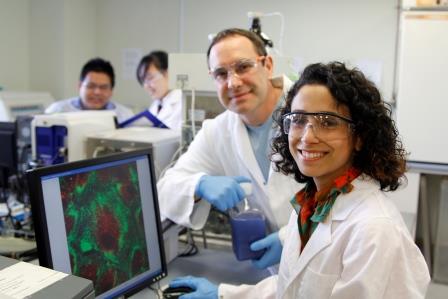
Researchers Negar Talaei Zanjani and Dr Peter Valtchev study cold sores virus
20 August 2014 - The blue blood of abalone, a seabed delicacy could be used to combat common cold sores and related herpes virus following breakthrough research at the University of Sydney.
The small to very large edible sea snails contain potent anti-viral properties and chemical engineers in collaboration with virologists at the University of Sydney have identified how these properties block the herpes virus 's entry into cells.
Professor Fariba Dehghani, Director of Bioengineering Research at the Faculty of Engineering and Information Technologies led the multi-disciplinary team that made the breakthrough.
"Hemocyanins are giant copper-containing glycoproteins and their primary function is to collect and deliver oxygen to desired tissues," explains Professor Dehghani.
Our study shows that abalone hemocyanin inhibits herpes simplex infection," she says.
"We know once infection occurs the virus integrates itself into a body 's nerve cells where it lays dormant awaiting reactivation.
When awakened it travels back along the nerve tracks to the surface where it takes the form of watery blisters and ulcers on the skin."
Professor Tony Cunningham, director, Westmead Millennium Institutes says there are a range of acyclovir equivalents that have been prescribed to treat this often painful viral infection. While the treatment can shorten the disease, it cannot kill the virus.
Statistics show more than 70 percent of Australians carry the herpes simplex 1 with approximately 13 percent carriers of the herpes simplex 2 which can cause genital herpes.
"With the information we now have, we are hopeful that we can develop an anti-viral therapy that will prevent or reduce recurrence of the virus and/or hasten healing of the lesions," states Professor Cunningham.
The raw material for the research came from the blood of black lip abalone found in pristine bays along the Tasmanian coastline.
The healing properties of abalone were discovered by accident says Mr Adrian Cuthbertson, CEO, Marine Biotechnologies Australia Pty Ltd and the University 's industry research partner.
"Ten years ago we were involved in an abalone serum trial relating to cancer treatments. During the clinical tests where patients drank a processed form of Abalone blood they reported a much lower incidence in their cold sore breakouts," says Mr Cutherbertson.
"Around the same time we had an employee responsible for loading and unloading abalone shells containers. After a month of working with the shellfish he found that the viral warts which had plagued his hands for years disappeared."
This convinced me that abalone had to be investigated for its anti-viral properties." says Mr Cuthbertson.
Mr Cuthberston says three years ago after a few setbacks he was referred chemical engineers at the University of Sydney who also enlisted the expertise of virus researchers at the Westmead Millennium Institute.
This discovery is expected to lead to the generation of a new class of anti-viral compounds.
Looking forward Mr Cuthbertson says the discovery has the potential to enhance the value of the Tasmanian abalone fishery.
The research team includes PhD candidate Negar Talaei Zanjani and Dr Peter Valtchev associate researcher, from the Faculty of Engineering and Information Technologies, Dr Monica Saksena, Westmead Milliennium Institute. The project was co-funded by the Australian Research Council and Marine Biotechnology Australia.
SUPPORTING LOCAL GOVERNMENT CLIMATE CHANGE RESILIENCE
Rob Stokes MP, Minister for the Environment, Minister for Heritage, Minister for the Central Coast, Assistant Minister for Planning
Wednesday 20 August 2014
A new $1 million scheme to address climate change risks and vulnerabilities will allow NSW local government organisations to undertake climate change projects and programs, the NSW Government announced today.
Environment Minister Rob Stokes said the Building Resilience to Climate Change grants will provide grants of between $15,000 to $80,000 will support local government and communities to:
• implement actions that minimise financial losses;
• address threats; and
• capture opportunities posed by a changing climate.
The NSW Government will provide support to local decision makers to develop practical and effective responses to climate change,” Mr Stokes said
In 2013, the Productivity Commission noted local government barriers to adaptation measures include financial and professional capacity constraints, lack of information and guidance and legal liability concerns.
The grants will promote coordination and collaboration among local governments through:
• bringing private sector and community organisations into decision making;
• building adaptation networks of experienced adaptation practitioners in the local government sector, across the state and across the sector; and
• building regional alliances and resource sharing.
Local Government Minister Paul Toole said local government plays a key role in responding to climate change, as many impacts and risks are at the local level.
“These grants will promote coordination, collaboration and knowledge sharing at the local government level and foster regional alliances, common activities and resource sharing,” Mr Toole said.
“This three year program is funded through the Office of Environment and Heritage and the NSW Environmental Trust, and administered by Local Government NSW.”
President of LGNSW, Cr Keith Rhoades AFSM, welcomes the funding for climate change resilience. “Many NSW councils understand the importance of planning for climate change, as it can directly affect council assets and services to the community.
“These grants will also promote more effective coordination and knowledge sharing between councils, allowing more efficiency in sharing resources and common practices with regards to climate change,” said Cr Rhoades.
Information on how to apply is available at:
New maps help protect our native species
Federal Government.: Department of the Environment - Media Release 19 August 2014
The Department of the Environment today released more than 1700 new maps and data that local communities can use to find threatened species in their area.
Threatened Species Commissioner Gregory Andrews said the maps and data were a valuable resource for local groups and natural resource managers, allowing them to target their conservation efforts.
“This information is being made publicly available for the first time. For people to care about their local environment, they need to know what’s there and understand just how precious it is. That’s why tools like this are so important,” Mr Andrews said.
“The maps and data focus on native flora and fauna that are listed under national environment law as vulnerable, endangered and critically endangered. If we want to protect these plants, mammals, birds, reptiles, frogs and fish from further decline, we need to share our resources with community groups on the ground.”
The maps were developed by the Department using details from state, territory and national databases as well as information published in species recovery plans and listing advice. The maps are general enough to ensure threatened plants and wildlife can’t be illegally collected or disturbed.
The maps are accompanied by associated data including:
•an industry standard grid which can be loaded into a geographic information system (GIS)
•a summary spreadsheet which provides an index to each species map and links to further information
•a user guide explaining how the maps were generated.
Members of the public are encouraged to provide feedback through the website so that the maps can be kept up to date.
The maps can be downloaded atwww.environment.gov.au/science/erin/databases-maps/snes
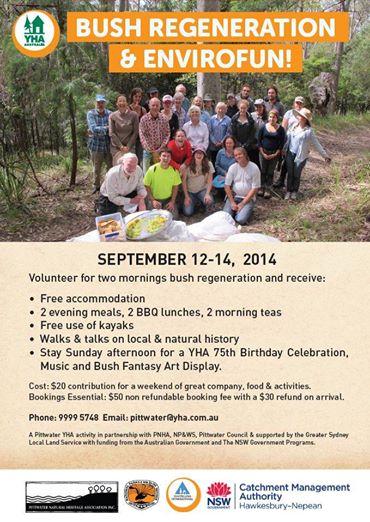
THOUSANDS OF KILOMETRES OF BUSHLAND PROTECTED
Rob Stokes MP, Minister for the Environment, Minister for Heritage, Minister for the Central Coast, Assistant Minister for Planning
MEDIA RELEASE - Tuesday 19 August 2014
Environment Minister Rob Stokes today hailed the extraordinary efforts of those involved in the Great Eastern Ranges Initiative, one of the world’s largest conservation partnership projects.
Speaking at the first interstate forum on the program, Mr Stokes said the GER has brought together thousands of people in hundreds of organisations and communities to protect the biodiversity and halt the decline of species along this vast wildlifecorridor stretching from western Victoria to far north Queensland.
“Through your many and varied contributions to this project, the GER shows what can be achieved with hard work and passion for our environment,” Mr Stokes said.
The Great Eastern Ranges Initiative is a collaborative, cross-border program that sets out to link and restore fragmented habitats along the Great Dividing Range across public and private land.
The GER now covers more than 3600km from western Victoria, through NSW, the ACT and up to far north Queensland more than 200 participating organisations completing a range of conservation projects.
It is Australia’s most extensive network of national parks, private land conservation and community habitat projects, formed into a single corridor.
The NSW Government has provided more than $11 million to support the initiative’s ongoing work.
The GER is supported by a diverse range of organisations and individuals including Greening Australia, the Australian Conservation Foundation, Ozgreen, the National Parks Association of NSW, the Nature Conservation Trust of NSW, community groups, local councils, farming groups and indigenous organisations.
FLYING FOX NETTING PROGRAM EXTENDED
Katrina Hodgkinson MP, Minister for Primary Industries, Rob Stokes MP, Minister for the Environment
MEDIA RELEASE- Tuesday 19 August 2014
Funding is now available to all NSW orchardists to install netting to protect their crops from flying foxes, Environment Minister Rob Stokes and Primary Industries Minister Katrina Hodgkinson announced today.
Mr Stokes said that the Flying Fox Netting Program – previously only available to growers in the Sydney Basin and Central Coast – has been extended to all NSW growers who are experiencing damage from flying foxes.
“There is now over $4 million in funding available for both throw netting as well as fully secured netting,” Mr Stokes said.
“The Office of Environment and Heritage has been working closely with the Department of Primary Industries to find a practical solution to help farmers reduce crop losses.
“The installation of flying-fox exclusion netting for orchardists, eliminates the need to issue shooting licences for flying-foxes (particularly Grey-headed Flying-foxes), where netting has been installed.”
Ms Hodgkinson said the extension of the program is great news for the state’s premier inland fruit growing regions, particularly at Young, Orange, Batlow, Bathurst and Tumut and on the North Coast.
“This is a great example of how the NSW Liberals & Nationals Government is supporting our fruit growers to find an effective solution to prevent further losses.
“In addition to extending the program to beyond Sydney, the scheme also now covers throw over netting which is a more practical solution for growers.
“This is a funds-limited program, so I strongly encourage interested fruit growers to get in touch with the RAA as soon as possible.”
Member for Orange Andrew Gee said increasing numbers of flying foxes have caused extensive damage to valuable fruit crops.
“While this program started in the Sydney Basin and Central Coast regions, there has been strong demand for it to be expanded to other parts of NSW and today’s announcement is good news for orchardists across the state,” Mr Gee said.
The Netting Subsidy Program is administered by the NSW Rural Assistance Authority and more information can be found atwww.raa.nsw.gov.au/assistance/flying-foxnetting or by phoning 1800 678 593.
PROTECTING NSW’S PRECIOUS WATER RESOURCES
Kevin Humphries MP Anthony Roberts MP Minister for Natural Resources, Lands Minister for Resources and Energy and Water Special Minister of State, Minister for Western NSW
MEDIA RELEASE - Tuesday 19 August 2014
The NSW Government has today announced a ground-breaking new framework that will map, monitor and protect groundwater resources across NSW.
Minister for Natural Resources, Lands and Water Kevin Humphries and Minister for Resources and Energy Anthony Roberts said the Water Monitoring Framework will transform how water data is captured and used to protect the State’s precious water resources.
“For the first time in Australia, if not the world, state-of-the-art computer modelling will be used in conjunction with groundwater baseline data to map and protect underground water resources in NSW,” Mr Humphries said.
“Water is the lifeblood of communities across the State and that is why the NSW government is gathering the facts we need to make informed decisions that ensure our water resources are protected.
“Starting first in the Gunnedah, Gloucester and Clarence Moreton basins, we will use start-of-the-art technology to map underground water and provide baseline water profiles.
“Experts will study groundwater availability in these basins, and carefully analyse where industries such as agriculture and mining draw their water from and the volume allocated within the different systems.
“Once complete, this mapping will provide real-time data from bores across these basins that will be used as ‘early warning’ system to quickly identify threats to water resources, tackle the causes, and prevent future problems.”
Through the Water Monitoring Framework, the NSW Government will:
Improve governance and accountability of water data and water management;
Enhance data monitoring and real time reporting to provide greater confidence to the community about impacts on water quality and quantity from various extractive industries; and,
Improve community access to baseline water data information, being led by the NSW Land and Water Commissioner.
Mr Humphries said the web-based monitoring and visualisation software developed by the National Information Community Technology Australia (NICTA) will provide ground-breaking information on all aspects of groundwater systems.
“Some of these basins have not been comprehensively monitored in the past as there has been little demand for groundwater,” Mr Humphries said.
“As part of this initiative, new monitoring bores will be installed across the key basins and real-time data from these bores will be published on the NSW Office of Water website.
“This framework will ensure that water monitoring and evidence-based information adequately supports the long-term sustainable management of the State’s water resources.”
Mr Roberts said the vast majority of water in NSW - between 60 to 70 per cent - is used for irrigated agriculture, while 1.5 per cent of the State’s water is used by the mining industry.
“Whether water is being used for agricultural, mining or household use, it is crucial that we continue to investigate and monitor activity within the basins and protect the State’s valuable water resources,” Mr Roberts said.
“To ensure we’ve got the basis for sound decision making we’ve drawn on independent advice from Australia’s most respected scientific experts.
“Once these three basins have been mapped, this vital monitoring and modelling project will continue across NSW.
“The Water Monitoring Framework will provide honest, independent and consistent oversight and further strengthen NSW’s claim to have the toughest regulations for mining and gas in Australia.”
Further information on the Groundwater Baseline Project,including a series of videos, is available at www.water.nsw.gov.au
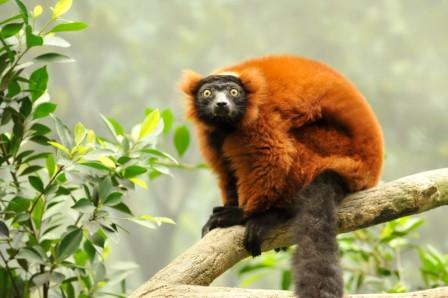
World's primary forests on the brink, study concludes
August 18, 2014 - An international team of conservationist scientists and practitioners has published new research showing the precarious state of the world's primary forests. The global analysis and map are featured in a paper appearing in the journalConservation Letters and reveals that only five percent of the world's pre-agricultural primary forest cover is now found in protected areas.
Led by Professor Brendan Mackey, Director of the Climate Change Response Program at Griffith University in Queensland, Australia, the authors are experts in forest ecology, conservation biology, international policy and practical forest conservation issues.
Representing organizations such as the US-based Wildlife Conservation Society, the Zoological Society of London, the Geos Institute and Australian National University, they conclude that primary forest protection is the joint responsibility of developed as well as developing countries and is a matter of global concern.
Primary forests - largely ignored by policy makers and under increasing land use threats - are forests where there are no visible indications of human activities, especially industrial-scale land use, and ecological processes have not been significantly disrupted.
These forests are home to an extraordinary richness of biodiversity, with up to 57 percent of all tropical forest species dependent on primary forest habitat and the ecological processes they provide.
The analysis shows that almost 98 per cent of primary forest is found within 25 countries, with around half of that located in five developed countries: the U.S., Canada, Russia, Australia and New Zealand.
Professor Mackey warns that industrial logging, mining and agriculture gravely threaten primary forests, and those outside of protected areas are especially vulnerable.
He adds that policies are urgently needed to reduce pressure to open up primary forests for industrial land use.
"International negotiations are failing to halt the loss of the world's most important primary forests," says Professor Mackey. "In the absence of specific policies for primary forest protection in biodiversity and climate change treaties, their unique biodiversity values and ecosystem services will continue to be lost in both developed and developing countries."
Co-author James Watson, of the Wildlife Conservation Society, says: "Primary forests are a matter of significant conservation concern. Most forest-endemic biodiversity needs primary forest for their long-term persistence and large intact forest landscapes are under increasingly pressure from incompatible land use."
The authors identify four new actions that would provide a solid policy foundation for key international negotiations, including forest-related multilateral agreements to help ensure primary forests persist into the 21st century:
1 Recognize primary forests as a matter of global concern within international negotiations and not just as a problem in developing nations;
2 Incorporate primary forests into environmental accounting, including the special contributions of their ecosystem services (including freshwater and watershed services), and use a science-based definition to distinguish primary forests;
3 Prioritize the principle of avoided loss -- emphasize policies that seek to avoid any further biodiversity loss and emissions from primary forest deforestation and degradation;
4 Universally accept the important role of indigenous and community conserved areas -- governments could use primary forest protection as a mechanism within multilateral environmental agreements to support sustainable livelihoods for the extensive populations of forest-dwelling peoples, especially traditional peoples, in developed and developing countries.
Brendan Mackey, Dominick A. DellaSala, Cyril Kormos, David Lindenmayer, Noelle Kumpel, Barbara Zimmerman, Sonia Hugh, Virginia Young, Sean Foley, Kriton Arsenis, James E.M. Watson.Policy Options for the World's Primary Forests in Multilateral Environmental Agreements. Conservation Letters, 2014; DOI:10.1111/conl.12120
Top: Madagascar’s Makira forest is one of the world’s great primary forests home to wildlife found nowhere else on earth including this red-ruffed lemur. 57 percent of all tropical forest species are dependent on primary forest habitat and the ecological processes they provide. Credit: Julie Larsen Maher/Wildlife Conservation Society

September is National Biodiversity Month
Biodiversity month is held in September each year. It promotes the importance of protecting, conserving and improving biodiversity in Australia and around the world. Find out more about protecting Australia's biodiversity
Australia's biodiversity: Indigenous perspectives
By CSIRO - Published on 19 Aug 2014
Aboriginal concepts connecting people to 'Country' and living things through a web of relationships have a lot in common with the English term 'biodiversity'. Aboriginal and Torres Strait Islander peoples have a unique perspective on Australia's biodiversity and its management, which stems from their long-term observations, sustained residence and oral histories. Dr Fiona Walsh talks about some of the knowledge and perspectives that have been shared with her.
Access CSIRO's book Biodiversity: Science and Solutions for Australia - www.csiro.au/biodiversitybook
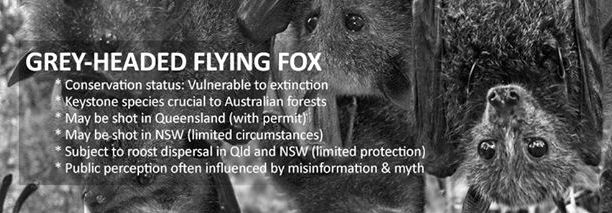
Threatened species DaySunday September 7th – 2014
By The Brink
Each year, we select one species as the ambassador for The Brink and focus our efforts on that species.
By doing this, we aim to initiate actions that will help that species. At the same time we want to impress on government authorities that many people feel strongly that the conservation of wildlife is a priority.
The species chosen for Threatened Species Day (2014) is the Grey-headed Flying Fox, Pteropus Poliocephalus.
ABOUT FLYING FOXES
Grey-headed Flying-foxes are endemic to Australia and one of the largest species of bats in the world, with a wingspan of well over a meter. Flying foxes are fruit and nectar eaters.
They are unique pollinators and seed dispersers due to their habit of feeding on night-flowering trees, and flying long distances in a single night - making them one of the most important pollinators of Australian forests along Australia's east coast. As a consequence, Australian Flying-foxes) are considered to be a keystone species.
MYTHS
One of the issues faced by this species is the plethora of myths and misinformation surrounding them, especially regarding health risks to humans. Less than 1% of flying-foxes carry Lyssavirus (a potentially fatal virus) . Only two people have ever contracted the virus from a flying fox, and there is an effective post-exposure treatment available. There is also an effective vaccination against Hendra Virus (which effects horses). There are no other significant health risks specifically associated with Flying-foxes. In other respects they are no more dangerous than any other wild animal (and statistically less dangerous than some domestic pets).
Flying foxes are clean. They spend hours grooming (cleaning) every day, although like other animals, during mating season, males exude stronger odours which may attract female flying-foxes.
WHY FLYING FOXES?
We want to send a clear message that conservation is not a popularity contest.
Conservation is not about saving species that are 'cute' or 'iconic' but about saving native species that can be saved. Grey-headed flying-foxes are listed as threatened in Victoria and NSW. They are listed nationally as vulnerable to extinction and identified internationally as vulnerable to extinction on the IUCN red list.
Numbers were recorded as dropping over 30% over just a few decades and there is anecdotal evidence that the species has declined dramatically since white settlement due to land clearing and shooting. They have been literally targeted by some farmers legally and illegally for decades.
Permits are issued in Qld to shoot flying-foxes for crop protection and there are moves by some NSW politicians to do the same. This is despite the fact that these are a threatened species, despite the fact they are a keystone species, despite evidence that shooing them is ineffective as a deterrent, and despite the fact that there are more effective solutions available for crop protection.
WHAT WE WANT FROM THE GOVERNMENT
We believe that six simple steps by the Government can contribute to reversing the decline of the Grey-headed flying-fox:
Implement a recovery plan, based on the 2009 edition of the (draft) National Grey-Headed Flying-Fox recovery plan without delay
Allow only humane, non-lethal methods to be used for the purposes of protecting crops from Flying foxes
Ban the use of backyard fruit tree netting that entangles wildlife, and allow only netting endorsed by the Wildlife Friendly Fencing project (www.wildlifefriendlyfencing.com)
Outlaw disturbance of Grey-headed Flying-fox roosts when these animals are in the late stages of pregnancy, or when dependent young are still in the camp.
Legislate to ensure that legally permitted disturbance of Grey-headed flying-fox roosts use only humane, non-lethal methods of dispersal
Conserve and protect Grey-headed flying fox habitat and create buffer zones around established roosts to disallow habitat destruction within 100 meters of a Grey-headed flying fox camp.

Biodiversity Legislation Review - Have Your Say
What are we doing?
The Minister for the Environment has appointed an independent panel to undertake a comprehensive review of the Native Vegetation Act 2003, Threatened Species Conservation Act 1995, Nature Conservation Trust Act 2001 and related legislation. Details of the Review Panel and the terms of reference are available atwww.environment.nsw.gov.au/biodiversitylegislation/index.htm
(External link).
Why are we doing it?
A major holistic review of biodiversity legislation (including native vegetation laws) in NSW has never been undertaken. The current legislative framework has become fragmented, overly complex and process driven. The review provides an opportunity to address inadequacies in the current legislative framework and develop a modernised biodiversity law that will facilitate the conservation of biological diversity, support sustainable development and reduce red tape.
How can you have your say?
The Independent Biodiversity Legislation Review Panel has been asked to maintain an active program of stakeholder engagement throughout the review process. The Review Panel has released an issues paper and encourages all interested people and organisations to make a written submission. The issues paper considers a range of issues across six major themes governing the management of native vegetation, threatened species and wildlife in NSW.The panel is particularly interested in any evidence to support comments made in submissions.
Anyone interested in making a submission should first read the issues paper, which provides context around each set of questions, along with additional information to help you make your submission.
Open for consultation
06 August 2014
Deadline for submissions
05 September 2014
See more Here:engage.environment.nsw.gov.au/biodiversity-legislation-review
Bird Watching with Pittwater Natural Heritage Association (PNHA)

Sunday Birdwatching with PNHA
Would you like to know more about local birds? Our guides can help you see and hear them in these wonderful bushland reserves, and learn about their lives.
Our birdwalks start about 7.30 and end about 10am. Bring Binoculars and some morning tea for afterwards if you like. Older children welcome.
21 September Deep Creek, off Wakehurst Parkway
16 November Irrawong Reserve, Warriewood
Contact us to book and get details of each birdwalk.
Email pnhabirdwatching@gmail.com or ph: 0439 409 202/0402 605 721
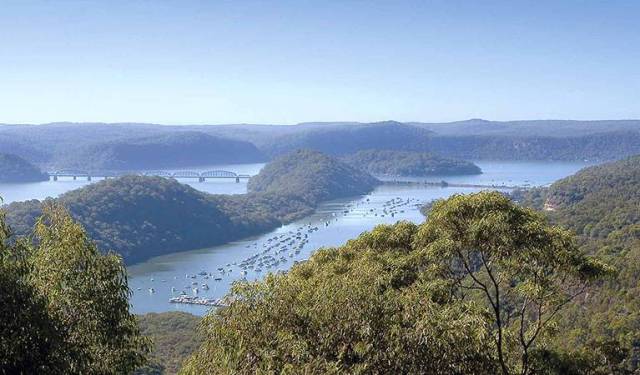
Muogamarra Nature Reserve open season 2014
Discover the cultural heritage and natural wonders of Muogamarra Nature Reserve this spring
Muogamarra Nature Reserve is home to an extraordinary landscape, open for just six weekends a year to preserve its fragile ecosystems and Aboriginal heritage. In spring, the reserve transforms into a brilliant display of colour when the spring wildflowers come into bloom.
This year, the Muogamarra spring flower open season takes place every Saturday and Sunday from 16 August to 21 September.
Join a NPWS Discovery tour and hear the secrets of Muogamarra from our volunteer guides. Tours are very popular, so early bookings are recommended.
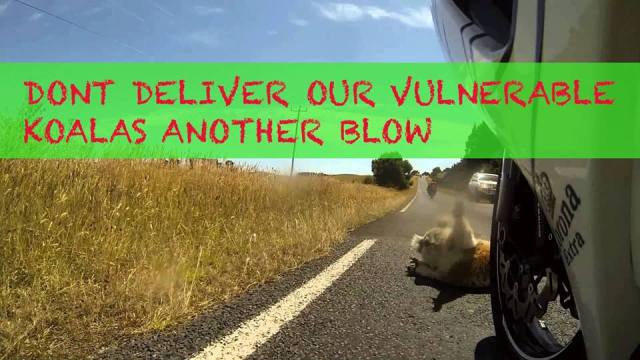

Bilarong Foreshore Walk and Field Day
31st Aug 2014 - 9am - 12pm
Come along and help us restore the natural habitat of the Deep Creek Catchment area!
Join us for a guided walk and bird talk in Bilarong Reserve along the foreshore of Narrabeen Lagoon through to Deep Creek, lend a hand with some weeding/planting and enjoy a scrumptious morning tea at the Deep Creek picnic area!
Where: Bilarong Reserve, end of turning circle near gates.
For more information contact Council's Bushcare Officer on 9970 1367 or email bushcare@pittwater.nsw.gov.au.
Australian Native Foods website:http://www.anfil.org.au/
Original Seasons of Australia
C/ - Bureau of Meteorology Australia
When flowers are in bloom, cold weather starts and winds increase, the Maung people of NT know its Wumulukuk – the longest of three seasons, spanning from March to July. More info here:http://bom.ws/y
New WIRES Wildlife Rescue App
This morning we launched our new WIRES Wildlife Rescue App!
 Download the free Rescue App to your smart phone or tablet to get access to wildlife advice and rescue assistance from the WIRES Rescue Team 7 days a week. You can find download details athttp://bit.ly/1oLQmOd
Download the free Rescue App to your smart phone or tablet to get access to wildlife advice and rescue assistance from the WIRES Rescue Team 7 days a week. You can find download details athttp://bit.ly/1oLQmOd
You can report rescues of sick, injured or orphaned wildlife directly from the app and have instant access to the most commonly needed information to help native animals in distress.
Visit the Apple store or Google Play store to download our the WIRES Wildlife Rescue App now. More information and links at http://bit.ly/1oLQmOd
2014 Australasian Bird Fair - Australasia’s first Bird Fair
October 25-26, 2014
The 2014 Australasian Bird Fair will be the first large-scale bird and wildlife event of its kind in Australasia. By all early indications it will be the largest in the Southern Hemisphere.
Raising awareness of birds in peril
The Australasian Bird Fair is a response to the need to raise awareness of the plight of so many bird species which are in peril across the Australasian region. Our current focus is particularly upon New Zealand, Australia and the Pacific Island nations. Raising funds from ticket sales for endangered species programs is a high priority, with all profits going to bird conservation.
Something for everyone
The Australasian Bird Fair will offer plenty of fun and educational activities for all. There will be opportunities to network with like minded people and find further engagement in conservation, bird watching and other nature-related activities. The Australasian Bird Fair will have something for everyone irrespective of their level of expertise or experience in birding! Bird Fair hours
The Australasian Bird Fair will be open from 9:00am to 6:00pm each day.
Visit www.birdfair.com.au/
Nikon Australia – Australasian Bird Fair Photography Competition
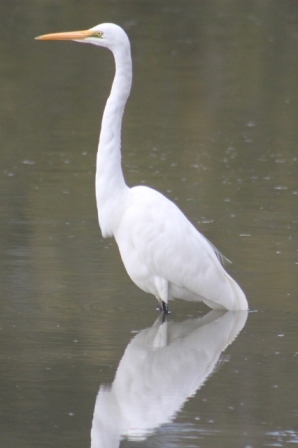 The Nikon Australia – Australasian Bird Fair Photography Competition is open to all. The total prize pool is in excess of $10,000. There are five categories:
The Nikon Australia – Australasian Bird Fair Photography Competition is open to all. The total prize pool is in excess of $10,000. There are five categories:
Bird Portraits (Whole bird, head shots, etc)
Flight (Images of birds in flight)
Environmental (Images of a bird or a flock of birds in their natural habitat)
Action & Behaviour (Photographs of a bird or birds in action or exhibiting interesting behaviour)
Digital Creation. (Free artistic manipulation of a bird image)
A fantastic prize pool!
The Winner of each category will receive a pair of Nikon Monarch 5 10×42 binoculars worth $499 each. The Runner Up in each category will receive a pair of Celestron Nature DX 8×32 binoculars worth $319 each.
A Grand Prize will also be offered by Nikon Australia: Nikon D810 camera body. With a massive 36.3 effective megapixels and all new FX-format image sensor, to get even better results through your lens! This fantastic prize is valued at $3999. There will also be a prize for the “People’s Choice” category: the Nikon 1 V3 kit with additional 70-300mm lens. The total value of the “People’s Choice” prize is $2298.
The deadline for entering the contest is midnight on 15th October 2014
Competition Rules and Entry
Read the competition rules and enter here
Turning waste from rice, parsley and other foods into biodegradable plastic
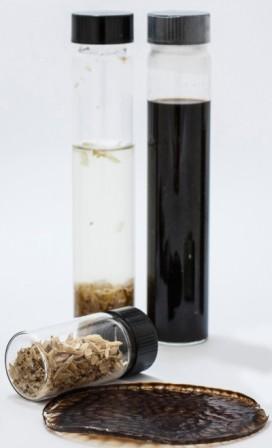 August 20, 2014 - Your chairs, synthetic rugs and plastic bags could one day be made out of cocoa, rice and vegetable waste rather than petroleum, scientists are now reporting. The novel process they developed and their results, which could help the world deal with its agricultural and plastic waste problems, appear in the ACS journal Macromolecules. Athanassia Athanassiou, Ilker S. Bayer and colleagues at the Italian Institute of Technology point out that plastic's popularity is constantly growing. In 2012, its production reached 288 million tons worldwide, but its ubiquity comes at a cost. Synthetic plastics persist for hundreds or thousands of years while releasing toxic components with the potential to harm the environment and human health. Also, plastics are made out of petroleum, which is a nonrenewable source. The shift to more environmentally friendly bioplastics has been challenging and expensive. Athanassiou's team wanted to find a simple, less costly way to make the transition.
August 20, 2014 - Your chairs, synthetic rugs and plastic bags could one day be made out of cocoa, rice and vegetable waste rather than petroleum, scientists are now reporting. The novel process they developed and their results, which could help the world deal with its agricultural and plastic waste problems, appear in the ACS journal Macromolecules. Athanassia Athanassiou, Ilker S. Bayer and colleagues at the Italian Institute of Technology point out that plastic's popularity is constantly growing. In 2012, its production reached 288 million tons worldwide, but its ubiquity comes at a cost. Synthetic plastics persist for hundreds or thousands of years while releasing toxic components with the potential to harm the environment and human health. Also, plastics are made out of petroleum, which is a nonrenewable source. The shift to more environmentally friendly bioplastics has been challenging and expensive. Athanassiou's team wanted to find a simple, less costly way to make the transition.
They turned to an organic acid that also occurs naturally and can process cellulose, which is the main building component of plants and also the most abundant polymer in nature. They mixed the acid with parsley and spinach stems, and husks from rice and cocoa pods. Then, they poured the resulting solutions into lab dishes.
When tested, the films that formed showed a promising range of traits from brittle and rigid to soft and stretchable -- similar to commercial plastics. "This opens up possibilities for replacing some of the non-degrading polymers with the present bioplastics obtained from agro-waste," the researchers conclude.
Ilker S. Bayer, Susana Guzman-Puyol, José Alejandro Heredia-Guerrero, Luca Ceseracciu, Francesca Pignatelli, Roberta Ruffilli, Roberto Cingolani, Athanassia Athanassiou. Direct Transformation of Edible Vegetable Waste into Bioplastics.Macromolecules, 2014; 47 (15): 5135 DOI: 10.1021/ma5008557
Top; Waste husks from rice (in the small vial) can be transformed into bioplastic.
Health papers published this week:
Abusive leadership infects entire team
August 20, 2014 - Supervisors who are abusive to individual employees can actually throw the entire work team into conflict, hurting productivity, finds new research led by a Michigan State University business scholar. The study, conducted in China and the United States, suggests the toxic effect of nonphysical abuse by a supervisor is much broader than believed. Published online in the Journal of Applied Psychology, it's one of the first studies to examine the effect of bad bosses in employee teams. Teams are increasingly popular in the business world.
Lead investigator Crystal Farh said supervisors who belittle and ridicule workers not only negatively affect those workers' attitudes and behaviors, but also cause team members to act in a similar hostile manner toward one another.
"That's the most disturbing finding," Farh said, "because it's not just about individual victims now, it's about creating a context where everybody suffers, regardless of whether you were individually abused or not."
Farh, assistant professor of management in MSU's Broad College of Business, said the findings could likely be explained by social learning theory, in which people learn and then model behavior based on observing others, in this case the boss. Previous research has shown that workers emulate supervisors' positive behaviors, she said, so it only makes sense they would follow negative behaviors as well.
For the study, Farh and Zhijun Chen from the University of Western Australia studied 51 teams of employees from 10 firms in China. Average team size was about six workers and the teams performed a variety of functions including customer service, technical support and research and development.
The study looked at nonphysical abuse such as verbal mistreatment and demeaning emails. Employees who directly experienced such abuse felt devalued and contributed less to the team. At the same time, the entire team "descended into conflicts," Farh said, which also reduced worker contributions.
"Teams characterized by relationship conflict," Farh said, "are hostile toward other members, mistreat them, speak to them rudely and experience negative emotions toward them."
The study was replicated in a controlled laboratory setting in the United States, with nearly 300 people participating.
The findings have implications for companies faced with rehabilitating a team of employees following abusive supervision. In the past, companies may have simply targeted abused employees with efforts to restore their self-esteem. While that's still important, Farh said, efforts should also be made to fix the team's interpersonal relationships by re-establishing trust and harmony.
Crystal I. C. Farh, Zhijun Chen. Beyond the Individual Victim: Multilevel Consequences of Abusive Supervision in Teams.. Journal of Applied Psychology, 2014; DOI: 10.1037/a0037636
Rates of heart disease, stroke continue to decline
August 19, 2014 - Deaths from heart disease and stroke are declining overall in Europe, but at differing rates, according to research, published online in the European Heart Journal. The research, which provides an update for 2014 on the burden of cardiovascular disease (CVD) in Europe, shows that death rates from CVD (diseases of the heart and blood vessels) vary enormously. For some eastern European countries, including Russia and Ukraine, the death rate from coronary heart disease for 55-60 year olds is greater than the equivalent rate in France for people 20 years older.
The age adjusted CVD death rates for men and women of all ages were six-fold higher in Russia than in France. In 2010 in Russia 915 men and 517 women died per 100,000 of the population, whereas the equivalent rates in France were 150 and 87 per 100,000 respectively.
In the UK the CVD death rates for 2010 were 205 and 129 per 100,000 men and women respectively.
Overall, CVD remains the single, greatest cause of death among Europeans than any other disease, and, in many countries causes twice as many deaths as cancer. However, the researchers, led by Dr Melanie Nichols, a Research Associate from the British Heart Foundation Centre on Population Approaches for Non-Communicable Disease Prevention at the University of Oxford (UK) and senior research fellow at Deakin University, Australia, found there were some countries where cancer was now causing more deaths than heart disease in men (Belgium, Denmark, France, Israel, Luxembourg, The Netherlands, Portugal, Slovenia, Spain and San Marino). For the first time, cancer has also overtaken CVD as the main cause of death among women in a European country: Denmark.
Co-author, Dr Nick Townsend, senior researcher at the BHF Centre on Population Approaches for Non-Communicable Disease Prevention, said: "The reason why cancer has overtaken cardiovascular disease as the main cause of death in these countries is due to the fact that fewer people develop cardiovascular disease and, in those who do, fewer die from it. This is probably due to improvements in the behavioural risk factors associated with CVD, such as decreases in the number of people smoking tobacco, along with better treatments, including preventive ones, such as the increasing use of statins. However, increases in some risk factors, such as rising levels of obesity, suggest that these decreasing trends may be in danger of reversing."
Dr Nichols and her colleagues in the Oxford research group looked at trends in deaths from CVD over a period of ten years to the most recent year available, (2010 to 2012 for most countries), for 52 out of 53 European countries (there were no data for Andorra). They looked at the total number of deaths for all ages, and also at those that could be classified as "premature": those before the age of 65 and those before the age of 75.
Data from the latest available year showed that there were just over four million deaths (1.9 million men and 2.2 million women) from CVD, close to half of all deaths in Europe. This was made up of 1.8 million deaths from coronary heart disease, one million from cerebrovascular disease (stroke) and 1.2 million from other cardiovascular diseases.
Just under a million men died before the age of 75 and half a million before the age of 65. Half a million women died before the age of 75 and just over 200,000 before the age of 65. Three in every ten deaths of Europeans aged under 65 were caused by CVD, as were 37% of all deaths occurring before the age of 75
Dr Townsend said: "The proportion of women who die from cardiovascular disease is much greater than men: 51% of women died compared to 42% of men. This difference is driven mainly by a higher rate of stroke and other cardiovascular diseases among women. There was very little difference in the rates of coronary heart disease between men and women: 20% versus 21% respectively."
Overall, the researchers say that CVD death rates are declining in most, but not all European countries. Trends have also been downwards for what are known as "case fatality rates" - the percentage of people who are diagnosed with a condition and die from the illness within a given period. In the 25 countries for which there were data, there was an average annual reduction in people dying after being admitted to hospital with a heart attack of five per cent in the past five years. On the other hand, the rates of people hospitalised for CVD have increased, probably reflecting the impact of increasing numbers of elderly people in the population.
In their paper, the authors conclude: "Worldwide, there have been few moments in history during which NCDs [non-communicable diseases] have enjoyed such a prominent place in the world's attention, with cardiovascular disease at the forefront of the activity. Despite this, there has been little commitment at the national or regional level to greater monitoring and reporting of risk factors and outcomes for cardiovascular disease. It is clear that in many countries of Europe, CVD mortality has continued to decrease substantially in recent years, and will make a large contribution to achieving this goal. In these (predominantly high income) countries, a 'tipping point' is rapidly approaching, when cancer deaths will outnumber cardiovascular disease deaths, particularly among men. In many other countries, however, the CVD burden dwarfs that of cancer, and a large proportion of the populations will lose their lives prematurely to heart disease and stroke."
M. Nichols, N. Townsend, P. Scarborough, M. Rayner. Cardiovascular disease in Europe 2014: epidemiological update. European Heart Journal, 2014; DOI:10.1093/eurheartj/ehu299
Seals and sea lions likely spread tuberculosis to humans
August 20, 2014 - Tuberculosis is one of the most persistent and deadliest infectious diseases in the world, killing one to two million people each year. Scientists who study tuberculosis have long debated its origins. New research shows that tuberculosis likely spread from humans in Africa to seals and sea lions that brought the disease to South America and transmitted it to Native people there before Europeans landed on the continent.
The paper, "Pre-Columbian Mycobacterial Genomes Reveal Seals as a Source of New World Human Tuberculosis," was published in Nature.
"We found that the tuberculosis strains were most closely related to strains in pinnipeds, which are seals and sea lions," said researcher Anne Stone, Arizona State University School of Human Evolution and Social Change professor. Stone and Johannes Krause of the University of Tubingen in Germany are co-principal investigators on the project. Research teams from the Wellcome Trust Sanger Institute in the United Kingdom and the Swiss Institute for Tropical and Public Health were collaborators on the study.
"What we found was really surprising. The ancient strains are distinct from any known human-adapted tuberculosis strain," Stone added.
Modern strains of tuberculosis currently circulating are most closely related to those found in Europe, and there was a complete replacement of the older strains when European disease reached the Americas during the age of exploration. Researchers found that genomes from humans in Peru dating from about 1,000 year ago provide unequivocal evidence that a member of the tuberculosis strain caused disease in South America before Europeans arrived, so the question among the scientists was, "What types of tuberculosis strains were present before contact?"
"The age of exploration is a time when people are moving really long distances around the world and coming into contact with others. It's a time when a lot of disease spread," Stone said. "This opens up a lot of new questions. It fits the bioarcheological evidence that shows the oldest evidence for tuberculosis in South America."
"The connection to seals and sea lions is important to explain how a mammalian-adapted pathogen that evolved in Africa around 6,000 years ago could have reached Peru 5,000 years later," Krause said.
In the study, researchers collected genetic samples from throughout the world and tested those for tuberculosis DNA while utilizing advances in technology during the past five years that enable more accurate genome capture from ancient samples. Of 76 DNA samples from New World pre- and post-contact sites, three from Peru around 750 to 1350 AD had tuberculosis DNA that could be used. The researchers then focused on these three samples and used array-based capture to obtain and map the complete genome.
These were compared against a larger dataset of modern genomes and animal strains. Research results showed the clear relationship to animal lineages, specifically seals and sea lions.
"Our results show unequivocal evidence of human infection caused by pinnipeds (sea lions and seals) in pre-Columbian South America. Within the past 2,500 years, the marine animals likely contracted the disease from an African host species and carried it across the ocean to coastal people in South America," Stone said.
Africa has the most diversity among tuberculosis strains, implying that the pathogen likely originated from the continent and spread. After tuberculosis was established in South America, it may have moved north and infected people in North America before European settlers brought new strains in.
"We hypothesize that when the more virulent European strains came, they quickly replaced the pinniped strains," Stone said.
"It was a surprise for all of us to find that tuberculosis, formerly believed to have spread around the world with ancient human migration events, is in fact a relatively young disease,'' said Kelly Harkins, one of the study's first authors and recent doctoral graduate from ASU's Center for Bioarchaeological Research.
"A compelling prospect for future research will be to determine the relationship of these older forms to those currently circulating, and those isolated from other ancient remains,"said Kirsten Bos, postdoctoral fellow at the University of Tuebingen and another first author on the study.
Study implications include a greater understanding of the speed and process of adaptation when a disease changes hosts. This is especially of interest when considering diseases that are transmitted between species - MERS, SARS and HIV - and how these are spread, Stone added.
"Tuberculosis is a disease that is on the rise again worldwide. This study and further research will help us understand how the disease is transmitted and how the disease may evolve," said Jane Buikstra, a collaborator on the study who identified tuberculosis in most of the cases utilized in the research. Buikstra is an ASU Regents' Professor and Director of the Center for Bioarchaeological Research.
Kirsten I. Bos, Kelly M. Harkins, Alexander Herbig, Mireia Coscolla, Nico Weber, Iñaki Comas, Stephen A. Forrest, Josephine M. Bryant, Simon R. Harris, Verena J. Schuenemann, Tessa J. Campbell, Kerrtu Majander, Alicia K. Wilbur, Ricardo A. Guichon, Dawnie L. Wolfe Steadman, Della Collins Cook, Stefan Niemann, Marcel A. Behr, Martin Zumarraga, Ricardo Bastida, Daniel Huson, Kay Nieselt, Douglas Young, Julian Parkhill, Jane E. Buikstra, Sebastien Gagneux, Anne C. Stone, Johannes Krause. Pre-Columbian mycobacterial genomes reveal seals as a source of New World human tuberculosis. Nature, 2014; DOI:10.1038/nature13591
Novel gene predicts both breast cancer relapse, response to chemotherapy
August 20, 2014 - Scientists have made it easier to predict both breast cancer relapses and responses to chemotherapy, through the identification of a unique gene. The newly found marker could help doctors classify each breast cancer patient and customise a treatment regimen that is more effective. The discovery was a collaborative effort by scientists from A*STAR's Institute of Molecular and Cell Biology (IMCB), and the Cancer Science Institute of Singapore (CSI Singapore) at the National University of Singapore (NUS). Despite advancements in cancer treatment, breast cancer remains the most common cancer among Singapore women. Thirty percent of early breast cancer patients in the world experience relapse due to metastasis, or the spread of cancer cells to other organs in the body. Some patients also do not respond well to chemotherapy. The inability to forecast relapses or the effectiveness of chemotherapy has led to a pressing need to identify predictive markers, which doctors can use to tailor appropriate treatment for each breast cancer patient at an early stage.
In a study published recently in the Journal of Clinical Investigation, a top-tier journal for discoveries in basic and clinical biomedical research, the team of scientists jointly led by Dr Vinay Tergaonkar, Principal Investigator at IMCB and Dr Alan Prem Kumar, Principal Associate at CSI Singapore and Assistant Professor at the Department of Pharmacology, NUS Yong Loo Lin School of Medicine, uncovered a gene, DP103, which is activated in metastatic breast cancer. DP103 acts as a master regulator, which expresses two sets of unfavourable proteins - one leads to metastasis and the other causes patients to be unresponsive to chemotherapy. Consequently, doctors can predict the probability of metastasis by examining the levels of DP103 in breast cancer patients. The same gene could also be used to predict whether a patient would respond to chemotherapy.
"Doctors are unable to tell if a breast cancer patient will respond to chemotherapy until six months after the treatment has been prescribed. It is very worrisome as the ones who are not responsive to chemotherapy usually also suffer relapses due to metastasis. This DP103 gene that we found explains the link and will facilitate doctors in selecting suitable treatments for different cases of breast cancer," said Dr Tergaonkar.
In addition, the study revealed that reducing the levels of DP103 could contain the cancer, shrink the tumour and make patients more amenable to chemotherapy. All the findings in the study have been validated with samples of breast cancer patients from Singapore, Canada, China and the USA.
"DP103 is a novel biomarker that could help doctors select appropriate treatments for breast cancer patients at an early stage. It is also a therapeutic target which could be explored further to develop drugs that suppress breast cancer growth, as well as metastasis," said Dr Kumar, who first discovered DP103's oncogene potential to drive breast cancer metastasis. He is also the Principal Inventor to a patent application on this discovery and is currently looking into ways to regulate DP103 levels in a variety of cancer types at CSI Singapore.
Eun Myoung Shin, Hui Sin Hay, Moon Hee Lee, Jen Nee Goh, Tuan Zea Tan, Yin Ping Sen, See Wee Lim, Einas M. Yousef, Hooi Tin Ong, Aye Aye Thike, Xiangjun Kong, Zhengsheng Wu, Earnest Mendoz, Wei Sun, Manuel Salto-Tellez, Chwee Teck Lim, Peter E. Lobie, Yoon Pin Lim, Celestial T. Yap, Qi Zeng, Gautam Sethi, Martin B. Lee, Patrick Tan, Boon Cher Goh, Lance D. Miller, Jean Paul Thiery, Tao Zhu, Louis Gaboury, Puay Hoon Tan, Kam Man Hui, George Wai-Cheong Yip, Shigeki Miyamoto, Alan Prem Kumar, Vinay Tergaonkar. DEAD-box helicase DP103 defines metastatic potential of human breast cancers. Journal of Clinical Investigation, 2014; DOI:10.1172/JCI73451
Severe infections with hospitalization after prostate biopsy rising in Sweden
August 20, 2014 - Transrectal ultrasound guided biopsy is the gold standard for detecting prostate cancer, but international reports have suggested that the number of risks associated with the procedure is increasing. In a new nationwide population-based study, Swedish researchers found that six percent of men filled a prescription for antibiotics for a urinary tract infection within 30 days after having a prostate biopsy, with a twofold increase in hospital admissions over five years, reports The Journal of Urology®.Earlier studies reported serious adverse events after prostate biopsy including febrile urinary tract infection and urosepsis in one to four percent of men, despite the use of prophylactic antibiotics. There have also been reports that chronic conditions such as diabetes, benign prostatic hyperplasia (BPH), and a history of urinary tract infection increase the risk of infections.
To estimate the incidence of infection after prostate biopsy and assess risk factors for infection and 90-day mortality in Sweden, researchers looked at records of more than 51,000 men registered in the Swedish Prostate Cancer database who underwent transrectal ultrasound guided prostate biopsy between 2006 and 2011. They also compiled data from the National Prostate Cancer Register (NPCR) of Sweden, which captures more than 96 percent of all newly diagnosed prostate cancers in the country.
"We aimed to estimate the frequency and severity of infectious complications in men diagnosed with prostate cancer after prostate biopsy by examining how many men filled prescriptions for antibiotics related to urinary tract infections, rates of hospitalization within 30 days, and death due to infection," says lead investigator Karl-Johan Lundström, MD, Department of Surgical and Perioperative Sciences, Urology, Andrology, Umeå University, Östersund, Sweden. "We also capitalized upon the unique nationwide cross-linked health care databases in Sweden to perform a more comprehensive evaluation of potential risk factors for infectious complications," he adds.
Of the men who filled a prescription for urinary tract antibiotics within 30 days of biopsy, 54 percent filled the prescription in the first week after biopsy. One percent of men were hospitalized with a urinary tract infection.
Between 2006 and 2011 the number of men obtaining an antibiotic prescription after biopsy decreased, whereas the number who were hospitalized increased. No significant increase in 90-day mortality was observed, however.
The strongest risk factors for an antibiotic prescription were multiple comorbidities, particularly diabetes, and prior infection. Overall, approximately two percent of the men had a urinary tract infection during the six months before biopsy.
"Our data show that severe infections with hospitalization after prostate biopsy are increasing in Sweden. The rate of hospital admission increased twofold during this five-year period. However, the risk of dying of an infection after prostate biopsy is very low," observes Dr. Lundström. "The risk of post-biopsy infection is highest among men with a history of urinary tract infections and those with significant comorbidities. The increasing risk of hospitalization is concerning and highlights the importance of carefully evaluating the indications for biopsy especially in men at increased risk of infection," he concludes.
Karl-Johan Lundström, Linda Drevin, Stefan Carlsson, Hans Garmo, Stacy Loeb, Pär Stattin, Anna Bill-Axelson. Nationwide Population Based Study of Infections after Transrectal Ultrasound Guided Prostate Biopsy. The Journal of Urology, 2014; DOI:10.1016/j.juro.2014.04.098
Scientists learn more about rare skin cancer that killed Bob Marley
August 20, 2014 - Acral melanomas, the rare type of skin cancer that caused musician Bob Marley's death, are genetically distinct from other types of skin cancer. Cancer Research UK scientists have discovered that acral melanomas - the rare type of skin cancer that caused reggae musician Bob Marley's death - are genetically distinct from other more common types of skin cancer, according to a study published in the journal Pigment Cell & Melanoma Research.
Acral melanoma most often affects the palms of the hands, soles of the feet, nail-beds and other hairless parts of the skin. Unlike other more common types of melanoma, it's not caused by UV damage from the sun.
The team, from the Cancer Research UK Manchester Institute at The University of Manchester, sequenced the tumours of five patients with acral melanoma and combined this with data from three other patients. They then compared the pattern of genetic faults found in these eight tumours with that of more common types of skin cancer.
This revealed that the type of DNA damage found in acral melanoma is very different from other types of skin cancer. For example in acral melanomas, it was much more common to find large chunks of the DNA that had broken off and reattached elsewhere, as opposed to the smaller DNA changes typically found in more common types of skin cancer.
Study leader Professor Richard Marais, director of the Cancer Research UK Manchester Institute, at The University of Manchester, said: "Too much UV radiation from the sun or sunbeds can lead to a build-up of DNA damage that increases skin cancer risk. But acral skin cancer is different because the gene faults that drive it aren't caused by UV damage. Pinpointing these faults is a major step towards understanding what causes this unique form of cancer, and how it can best be treated."
Nell Barrie, senior science information manager at Cancer Research UK, said: "We hope that understanding the faults that drive acral melanoma will unlock better ways of treating this rare yet aggressive type of skin cancer. Our scientists are striving to improve survival for all cancer patients, including those with rarer forms of the disease.
"And this is why skin cancer will be a key research focus for the Manchester Cancer Research Centre."
Simon J. Furney, Samra Turajlic, Gordon Stamp, J. Meirion Thomas, Andrew Hayes, Dirk Strauss, Mike Gavrielides, Wei Xing, Martin Gore, James Larkin, Richard Marais.The mutational burden of acral melanoma revealed by whole-genome sequencing and comparative analysis. Pigment Cell & Melanoma Research, 2014; DOI:10.1111/pcmr.12279
Type-1, type-2 diabetes caused by same underlying mechanism? Toxic clumps of hormone amylin may be to blame
August 20, 2014 - Work by scientists at the Universities of Manchester and Auckland suggest that both major forms of diabetes are the result of the same mechanism. The findings, published the FASEB Journal, provide compelling evidence that juvenile-onset or type-1 diabetes and type-2 diabetes are both caused by the formation of toxic clumps of a hormone called amylin.
The results, based on 20 years' work in New Zealand, suggest that type-1 and type-2 diabetes could both be slowed down and potentially reversed by medicines that stop amylin forming these toxic clumps.
Professor Garth Cooper, from The University of Manchester working with his University of Auckland-based research team, led the study.
As well as producing insulin, cells in the pancreas also produce another hormone called amylin. Insulin and amylin normally work together to regulate the body's response to food intake. If they are no longer produced, then levels of sugar in the blood rise resulting in diabetes and causing damage to organs such as the heart, kidneys, eyes and nerves if blood sugar levels aren't properly controlled.
However, some of the amylin that is produced can get deposited around cells in the pancreas as toxic clumps, which then, in turn, destroy those cells that produce insulin and amylin. The consequence of this cell death is diabetes.
Research published previously by Professor Cooper suggested that this is the causative mechanism in type-2 diabetes. This new research provides strong evidence that type-1 diabetes results from the same mechanism.
The difference is that the disease starts at an earlier age and progresses more rapidly in type-1 compared to type-2 diabetes because there is more rapid deposition of toxic amylin clumps in the pancreas.
Professor Cooper's group expects to have potential medicines ready to go into clinical trials in the next two years and it is anticipated that these will be tested in both type-1 and type-2 diabetic patients. These clinical trials are being planned with research groups in England and Scotland.
S. Zhang, H. Liu, C. L. Chuang, X. Li, M. Au, L. Zhang, A. R. J. Phillips, D. W. Scott, G. J. S. Cooper. The pathogenic mechanism of diabetes varies with the degree of overexpression and oligomerization of human amylin in the pancreatic islet cells.The FASEB Journal, 2014; DOI: 10.1096/fj.14-251744
Disclaimer: These articles are not intended to provide medical advice, diagnosis or treatment. Views expressed here do not necessarily reflect those of Pittwater Online News or its staff.